Neurodynamic Testing
1/6
There's no tags or description
Looks like no tags are added yet.
Name | Mastery | Learn | Test | Matching | Spaced |
|---|
No study sessions yet.
7 Terms
When do we stop the test or consider it positive?
What to considering during the test?
Each joint positioning component is added until the pain is provoked or symptoms are reproduced.
Always keep the previous action held properly. Ask the patient if there are any symptoms after each movement and look to their face for signs of discomfort.
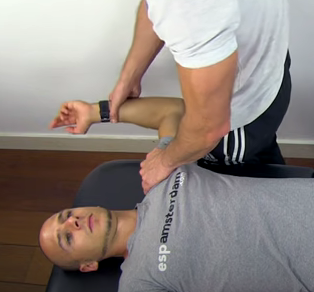
Median nerve
Position: Supine
Examiner: Facing cranially
Shoulder girdle depression (proximal hand depresses shoulder and thigh is used to block the shoulder)
Shoulder abducted to 90°
Elbow flexed to 90° and wrist is neutral
Extend the wrist and fingers
Externally rotate the shoulder
Extend the elbow
Side bend neck away from the side being tested
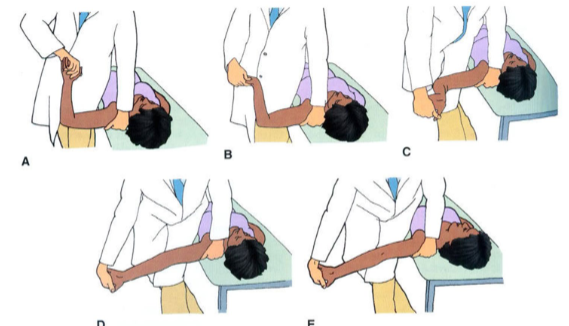
Radial nerve
Position: Supine, lying diagonally with shoulder out of the bed, arm at the side, elbow flexed to 90°, neutral wrist and fingers
Examiner: Facing caudally
Shoulder depression (depress with thigh)
Elbow extension
Medial rotation of the whole arm
Wrist, finger and thumb flexion
Side bend neck away from the side being tested
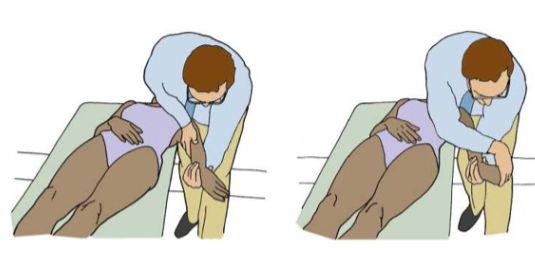
Ulnar nerve
Position: Supine
Examiner: Facing cranially
Shoulder girdle depression (proximal hand depresses shoulder and thigh is used to block the shoulder)
Shoulder abducted to 90°
Elbow flexed to 90° and wrist is neutral
Extend the wrist and fingers and pronate the forearm
Externally rotate and abduct the shoulder (bringing patient’s fingers towards their ear)
Side bend neck away from the side being tested
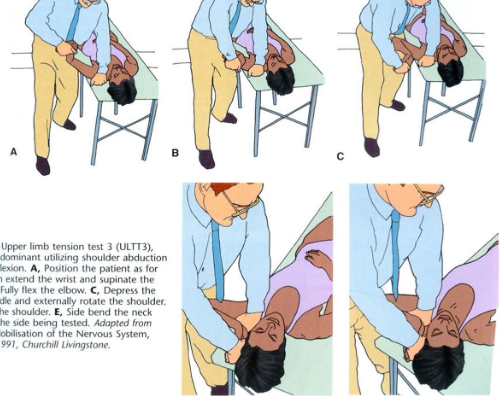
Slump test
Position: Seated
Examiner:
Thoracic/lumbar flexion (place forearm on top of cervical and thoracic spine to prevent extension)
Hands behind the back and cervical flexion
One knee extension
Dorsiflexion of extended foot
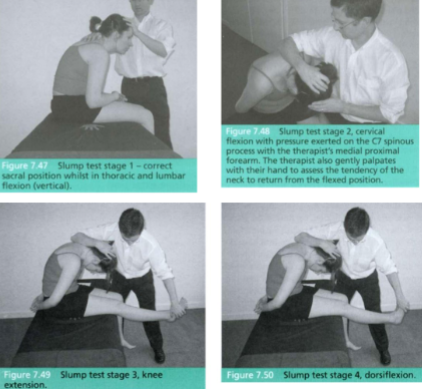
SLR
Position: Supine
Examiner:
Hip flexed and knee extended
Flex the hip and ask patient to inform when symptoms occur (usually between 30-70°)
You can confirm the symptoms by moving out of the painful range and dorsiflexing (for tibial nerve).

Prone knee bend test - Femoral nerve
Position: Prone
Examiner:
Full knee flexion
Hip extension
